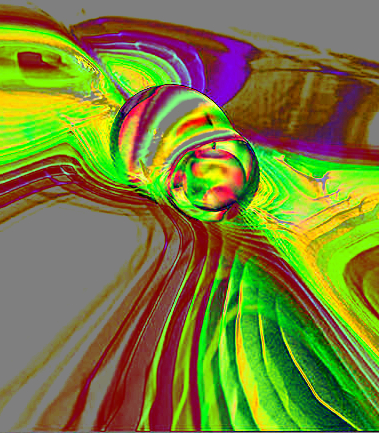More waves bathe LIGO
 Australian scientists have helped detect the gravitational waves emitted by colliding black holes for the second time.
Australian scientists have helped detect the gravitational waves emitted by colliding black holes for the second time.
In further evidence of a force previously only postulated about, an international team has spotted the waves caused by the collision of two black holes, one 14 and the other eight times the size of the sun.
The team observed the black holes orbiting each other 27 times a second before coalescing.
The signal was 10 times longer than that of the first gravitational wave, which was announced in February this year.
The signal was detected by the two Laser Interferometer Gravitational-Wave Observatory (LIGO) detectors in the United States, according to ANU researcher Professor Susan Scott, who works at the LIGO labs.
“This has cemented the age of gravitational wave astronomy,” she said
“This shows data is going to flow, that will enable us to map a lot more of the Universe than we’ve seen before.”
The violent collision happened approximately 1.4 billion years ago in a distant galaxy.
On their way to Earth, the gravitational waves died down so much that their impact on the LIGO detectors was a fraction of the width of a proton.
Gravitational waves strong enough to be detected on Earth are caused by violent cosmic events such as collisions between stars or black holes, or explosions such as supernovae.
Until gravitational waves were detected, nearly all astronomy had relied on electromagnetic observations – visible light, radio waves, X-rays and so on – said Dr Rob Ward, a LIGO researcher also from ANU.
“I'd always imagined there would be electromagnetic counterparts in our first discoveries, but instead we found these invisible collisions of black holes purely through the gravitational waves they emitted with no counterparts at all,” Dr Ward said.
“Gravitational wave astronomy is going to revolutionise our understanding of the Universe.”
The latest gravitational wave was detected on December 26, 2015.
The ripples reached the LIGO detector in Louisiana in the United States, and 1.1 milliseconds later the identical LIGO detector in Washington state.
The tiny signal was too small to be immediately seen amongst the background noise, but it took just seventy seconds for the super-computer processing the data to find a match between the two detectors and alert researchers.
The chair of the Australian Consortium for Interferometric Gravitational Astronomy, Dr Bram Slagmolen, said he was proud of the contribution Australian scientists had made to the detection.
“There’s massive enthusiasm among Australian scientists, we’ve come up with lots of innovative technology and ideas,” said Dr Slagmolen.
“Advanced LIGO is such a massive machine and it’s fantastic to see it operate in the way we intended,”
Professor David McClelland says that Australian scientists are already working on projects to enhance the sensitivity of the LIGO detectors.
“Our world-leading quantum optical devices will triple the searchable volume of our universe,” Professor McClelland said.
“We’ll see many more discoveries announced over the next few years.”








 Print
Print